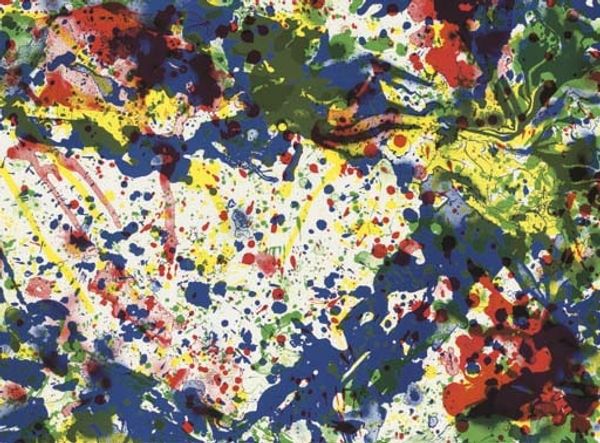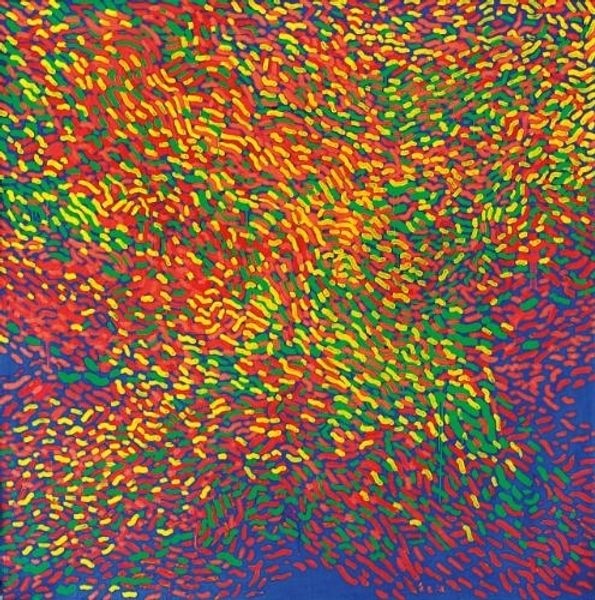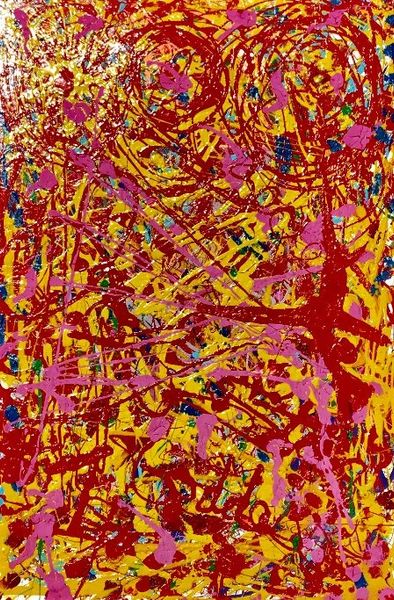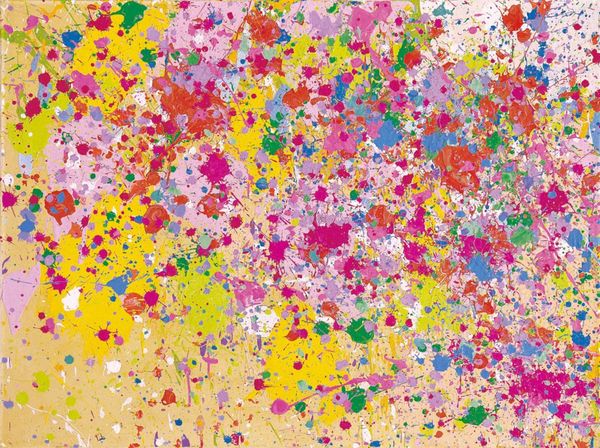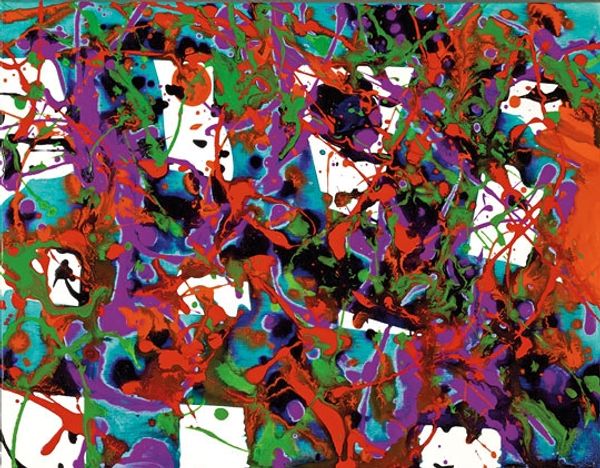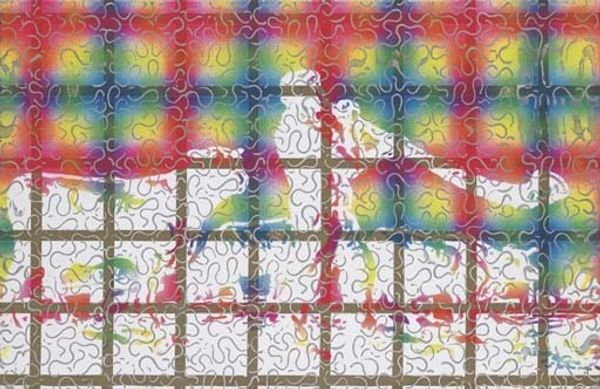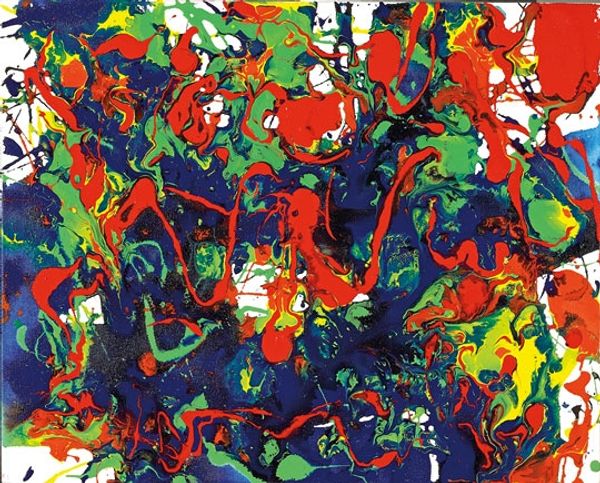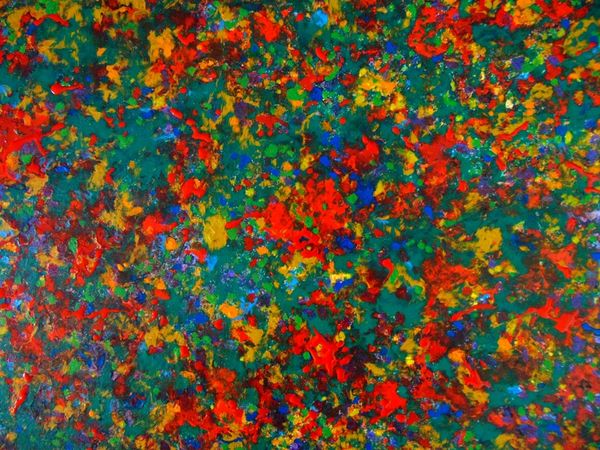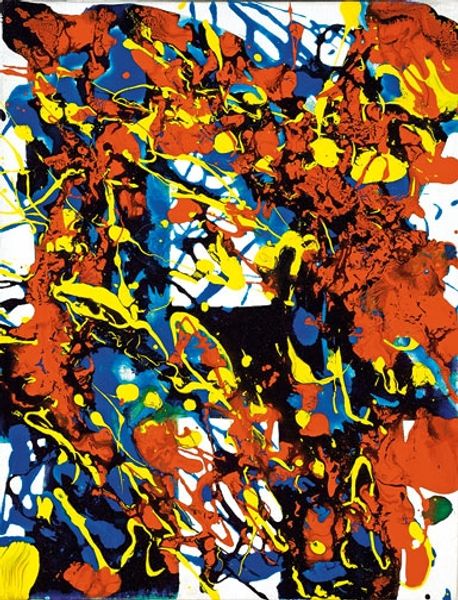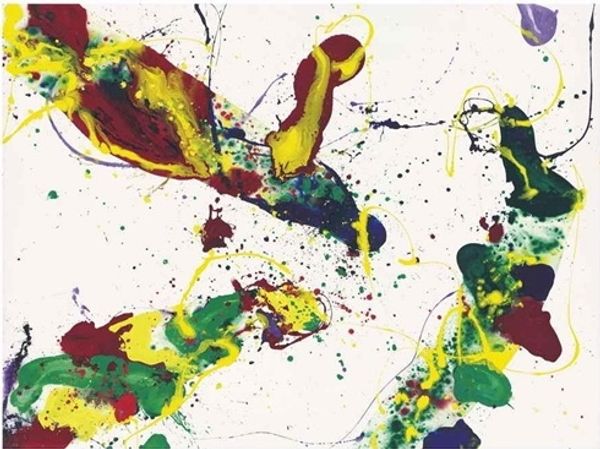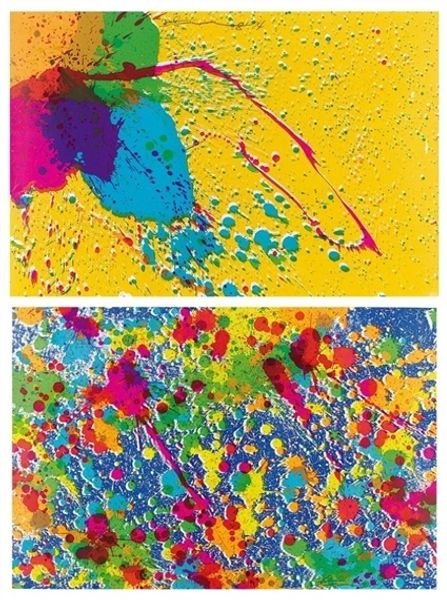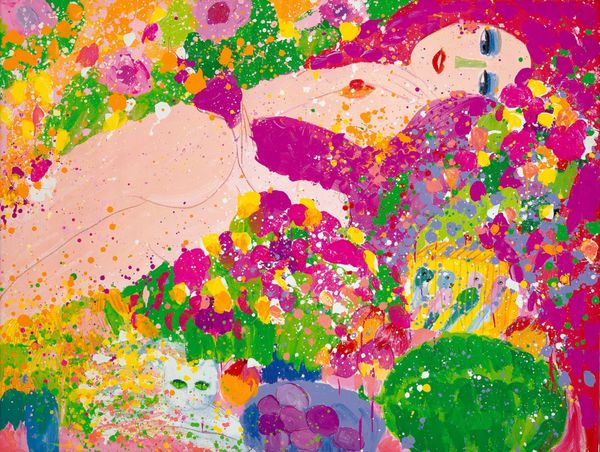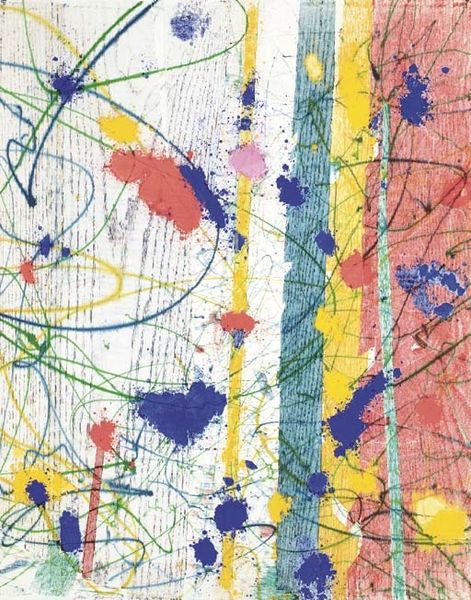
#
naturalistic pattern
#
random pattern
#
pattern
#
geometric pattern
#
abstract pattern
#
minimal pattern
#
organic pattern
#
capitalist-realism
#
vertical pattern
#
line
#
pattern repetition
#
layered pattern
#
funky pattern
#
orange
Copyright: 2019 Gerhard Richter - All Rights Reserved
Gerhard Richter created "Ludorff" using vibrant paints in a seemingly chaotic composition. At first glance, the canvas presents a riot of colors—primarily reds, yellows, and blues—applied in irregular dabs and strokes, creating an almost overwhelming visual experience. Yet, upon closer inspection, one discerns a certain underlying structure. The colors, while appearing randomly placed, are in fact carefully orchestrated to create depth and movement. Richter’s application of paint blurs the distinction between foreground and background. This blurring relates to post-structuralist ideas about destabilizing established meanings. The artwork challenges fixed interpretations, inviting us to question what we see and how we perceive reality. The lack of a clear focal point or discernible subject matter further pushes against traditional artistic norms. Richter uses the materiality of paint to engage with broader philosophical concerns, leaving us with a work that is both aesthetically engaging and intellectually stimulating. The effect destabilizes established categories, creating new ways of thinking about perception.
Comments
No comments
Be the first to comment and join the conversation on the ultimate creative platform.

